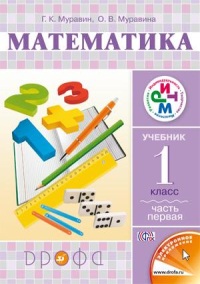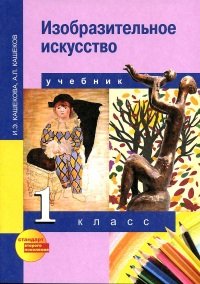Deborah Pearsall – Encyclopedia of Archaeology (3 Volume set)
1.870 ₽
Автор: Deborah Pearsall
Название книги: Encyclopedia of Archaeology (3 Volume set)
Формат: PDF
Жанр: Археология
Страницы: 2209
Качество: Изначально компьютерное, E-book
Archaeology is a subject that fascinates us. From Egyptian tombs to a frozen Alpine wayfarer, from cities buried under volcanic ash to stone arrow heads turned up by the plow, archaeology is in the news and in our backyards. It is paradoxical that a subject that so easily captures the imagination is so difficult for the serious layman to access. Superficial media treatments and picture-book atlases and site guides on the one hand, jargon-heavy scholarly books and narrowly focused articles on the other-there are few ways to learn about the real world of archaeology outside the college classroom or the dig site.
The Encyclopedia of Archaeology changes this, in making all aspects of archaeology accessible to a broad audience of the general scientific community, educators, students, and avocational archaeologists. Professional archaeologists and anthropologists will also find the encyclopedia a ready source of up-to-date information on specialities outside their own expertise.
The Encyclopedia of Archaeology encompasses all aspects of archaeology, including the nature and diversity of archaeology as a scientific discipline, the practice of archaeology, archaeology in the everyday world, and the future of the discipline. Featured in the Encyclopedia of Archaeology are articles by leading authors that summarize archaeological knowledge at the beginning the 21st century, highlighting important sites and issues, and tracing the development of prehistoric cultures around the globe. No existing work provides the breadth and depth of coverage as the Encyclopedia of Archaeology.
Also available online via ScienceDirect (2007) – featuring extensive browsing, searching, and internal cross-referencing between articles in the work, plus dynamic linking to journal articles and abstract databases, making navigation flexible and easy. For more information, pricing options and availability visit www.info.sciencedirect.com.
· The first and only reference work to cover all elements of archaeology, over 280 articles have been specifically commissioned for this reference work
· Distinguished Editorial Board headed by Editor-in-Chief Professor Deborah Pearsall, University of Missouri, along with many other prominent scientists serving as editorial advisors
· Breadth and depth of coverage ensures that professional archaeologists will find the Encyclopedia a ready source of up-to-date information on specialties outside their own expertise
· Each article has been reviewed to ensure accuracy, comprehensiveness, and up-to-date content.
· Articles are written to be accessible to the educated general public with jargon-free presentation of subjects
· Beautiful 4-color photography and informational figures throughout
· Topics are arrange A-Z for easy reference
· Geographic overview articles are grouped by continent or region to allow easy reference
· Glossary entries explain key terms
· Further Reading lists appear at the end of each entry
Archaeology today has become a truly international undertaking, and it has done so by employing what has
become a new and universal language. The record of the human past is a material one, recorded in the earth, in
the buried remains of vanished civilizations and in the material traces which past communities have left behind.
As this book clearly documents, those traces, the carefully excavated settlements and burials of early human
groups and their artifacts, which they made and used, can today be made accessible in what we may call the
language of archaeology.
That language, intelligible in every part of the world, is able to transcend the limitations of written history.
For narrative history, as set down in writing, is inevitably confined to the literate civilizations whose very early
texts come down to us from just a few locations in the Old World. The universal language of archaeology,
however, knows no such bounds. Instead it addresses the human use of material culture wherever human beings
have lived. It draws upon a broad range of techniques – from stratigraphic excavation to radiocarbon dating,
from aerial photography to molecular biology – which now make it possible to speak of a world archaeology, in
which the experiences of every country and people can take their place. This book sets out in a coherent way to
make that language clearly and directly intelligible to the reader, so that the basic techniques of archaeology can
be understood. It goes on to apply those techniques to the entire human story. Its broad sweep takes us from the
emergence of the first humans, initially in Africa, and their early out-of-Africa dispersals, through the whole
gamut of human experience, dealing with the rise of farming communities, the dawn of civilizations, the
formation of the first cities, and so down to the present, and to the postcolonial era in every part of the world.
The good news is that every land, every inhabited area of the earth, does have its archaeology. Each
community has a past, which today can be investigated with the use of the now-universal techniques of
investigation described here. The scope is vast. The story unfolds here on a continent-by-continent basis.
Only in recent decades has it been possible to put together such a survey. For it was radiocarbon dating that
opened the way for early developments in every part of the world to be dated. Suddenly the chronology of early
Australia or of southern Africa became just as secure and just as available as the comparable chronologies for
Europe or for the ancient Near East. The whole scope of human achievement in every part of the world is
becoming known through the practice of archaeology. The authors of this survey have produced an up-to-date
account not only of the methods which constitute the language of archaeology but also of the principal findings
which now allow us to speak of a world archaeology.
The authorship of the Encyclopedia of Archaeology reflects the cosmopolitan status of archaeology today. It
is truly international, with Chinese scholars writing many of the entries for China, African scholars for Africa.
The coverage is, of course, global, covering every continent (including Oceania) and every period. It is also
multifacetted, giving insights into the different schools of archaeological thought, which flourish today. It
recognizes that philosophical themes (Marxist archaeology; Postprocessual archaeology) must rub shoulders
with social topics (Ethnicity, Rise of political complexity), and both of these with issues of contemporary
concern (Who owns the past?, Politics of archaeology). These in turn are found side-by-side with some of the
key scientific subdisciplines (archaeometry, phytolith analysis, taphonomy), which today provide much of
the vocabulary for that universal language of archaeology.
The outcome is that this work will be read with profit in every part of the world. It will be as welcome in South
America (where the Amazon basin for once achieves necessary coverage) as in Europe, as appropriate in Japan as
inMesoamerica. It reflects well the changing nature of archaeology,with the fast developing range ofnew research
methods and the changing realities of a postcolonial world where the past of every area and region is of interest.
Colin Renfrew
Archaeology is a subject that fascinates us. From
Egyptian tombs to a frozen Alpine wayfarer, from
cities buried under volcanic ash to stone arrowheads
turned up by the plow, archaeology is in the news and
in our backyards. It is paradoxical that a subject that
so easily captures the imagination is so difficult to
access. Superficial media treatments and picturebook
atlases and site guides on the one hand, jargonheavy
scholarly books and narrowly focused articles
on the other – there are few ways to learn about the
real world of archaeology outside the university
classroom or the dig site. The aim of the Encyclopedia
of Archaeology is to change this, to make all
aspects of archaeology accessible to a broad audience,
from educated laypersons and university students
eager to learn about the field, to scholars
intent on broadening and updating their knowledge
of the discipline. No existing work provides the
breadth and depth of coverage achieved here.
It has been my privilege and pleasure to work with
over 260 talented archaeologists fromaround the globe
during this project. In the pages that follow, they will
introduce you to archaeology through contributions
arranged in an easy-to-use, alphabetical format. From
the moment I was invited to undertake this project,
I knew that I wanted the Encyclopedia of Archaeology
not only to showcase archaeological knowledge at the
beginning of the twenty-first century, but to convey
howarchaeologists work, and to illustrate the diversity
of issues and theoretical paradigms that drive our research.
From this grew an underlying four-part structure
for the Encyclopedia of Archaeology:
Archaeology as a discipline
The practice of archaeology
Archaeology at the beginning of the twenty-first
century: Aworld overview
Geographical overviews
Topics and issues that cross-cut geography
Archaeology in the everyday world
The ‘Contents list by subject’, which follows this Introduction,
illustrates how individual contributions are
grouped conceptually within this framework.
Each contribution to ‘Archaeology as a discipline’
places emphasis on the broad approach and subject
matter of part of the field of archaeology, and provides
historical context when appropriate. Here you
will be introduced to schools of thought as distinctive
as cognitive and evolutionary archaeology, learn of
the historic roots and philosophy of the field, and
read overviews of subjects from archaeoastronomy
to forensic archaeology to urban archaeology.
Contributions to ‘The practice of archaeology’ describe
the nuts and bolts of how archaeological research
is conducted, and incorporate case studies as
illustrations of modern archaeological practice.
Topics range from fieldwork, through analysis of
artifacts and biological materials, to approaches to
interpreting the archaeological record. Among our
authors you will find experts and innovators in archaeological
methodology.
‘Archaeology at the beginning of the twenty-first
century: A world overview’ is a wide-ranging review
of our knowledge of the past. Archaeological sites
and cultural traditions are placed in regional and
temporal context in contributions in the ‘Geographical
overviews’ section. Each article is written by an
archaeologist with hands-on research experience in
the region, and includes maps and illustrations of
sites and artifacts. Look up an archaeological site in
the index (or use the search function in the online
version) and you will be guided to the regional and
topical articles that discuss it. Or just browse and
learn the latest on the archaeology of East Africa,
Micronesia, or the Lesser Antilles. Regions are ordered
in the ‘Contents list by subject’ west to east,
and north to south, and within regions contributions
are ordered chronologically or by subregion, as
deemed appropriate.
Contributions to ‘Topics and issues that cross-cut
geography’ are in-depth articles on cutting-edge research
in archaeology. Case studies, often from more
than one region of the world, illustrate each topic.
Here you will be introduced to research on subjects as
diverse as extinctions of big game, social inequality,
and daily life in ancient cities. Contributions on
related subjects are grouped in the ‘Contents list by
subject’.
Finally, ‘Archaeology in the everyday world’ steps
back from the approaches, methods, and findings of
archaeology to look at archaeology as a profession. In
this section are contributions on the ethical and legal
aspects of practicing archaeology today, popular culture
and archaeology, and archaeology and stakeholder
communities.
The Encyclopedia of Archaeology would never
have come to fruition without the hard work of the
members of the Editorial Board, who assisted in developing
the subject list, fine-tuned the geographical
overview sections, suggested authors for contributions,
and reviewed completed manuscripts. They
each have my wholehearted thanks. I also thank the
following friends and colleagues for their assistance
and advice: Robert A. Benfer, Jr., J. Scott Bentley, Jane
C. Biers, Christine Hastorf, Janet Levy, NaomiMiller,
Hector Neff, Elizabeth Reitz, Ralph Rowlett, and
Peter Warnock.
Deborah M. Pearsall






Отзывы
Отзывов пока нет.